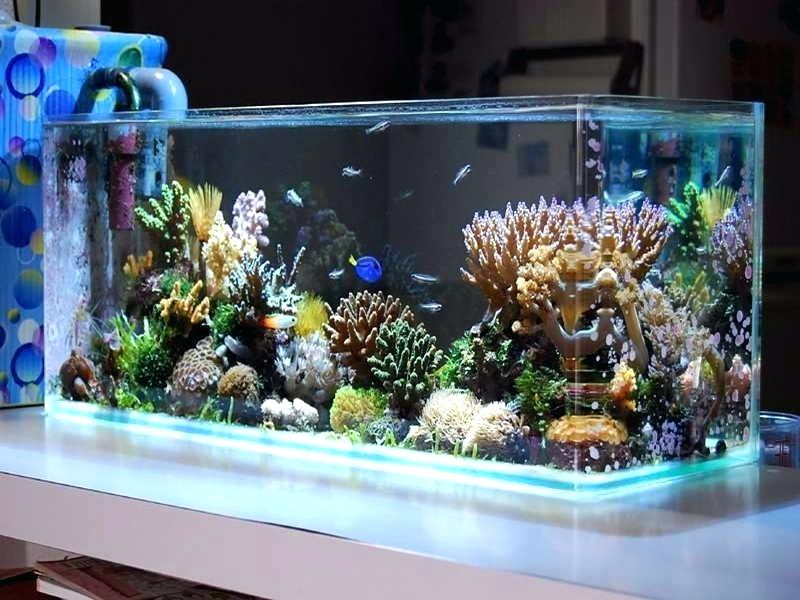We have all dreamed of having a fish as a pet at home and at the same time we want to have the terrace decorated with beautiful plants, shapes and accessories that will make our pet’s home a more welcoming place.
Planted aquariums are exactly that, those aquariums that are decorated with specific plants that live under water, but being such a complex species need some care and specific specifications to survive.
Types of planted aquariums
The great variety of types of planted aquariums that exist has led to the creation of different typologies, specifically 4.
The first classification is related to the difficulty of maintaining the aquarium, here we find these two types of aquariums
- High Tech: They have all the features that an aquarium should have planted includes plants of high care
- Low Tech: These are the aquariums that are easier to maintain and the plants are easy to care for.
The second classification refers to the composition of the aquariums:
- V composition: In this composition on both sides of the aquarium we find plants and rocks and the centre is empty.
- Central composition: This case would be the opposite, plants and rocks are positioned in the center.
- Lateral composition: In this case both the vegetation and the rocks are in a single corner of the fish tank.
- Rectangular composition: In this case the vegetation is everywhere.
Classification Nº3 depends on the type of decoration used
- Iwagumi Aquariums: The main element of the aquarium will be the rocks and other things serve to highlight the rocks.
- Landscape Aquariums: Are those that have great similarity with a terrestrial landscape.
- Dutch Aquarium: Mainly and almost exclusively include vegetation
Classification Nº4 are the types of biotopes that are aquariums with fauna and vegetation of a specific place. They can be the following
- Amazonian
- Asian
- Mangrove
- African
Types of planted aquarium according to technology
It is important that in the classification of aquariums we repair to the different models that we can find according to the technology. As we have already mentioned, they can be of two types, High-Tech and Low-Tech.

- High-Tech: They are aquariums that use CO2 and have high levels of light, which helps the good development of the plants. Through these aquariums we can make the development of plants faster, ie regulating the temperature, the amount of light and nutrients among others. This development implies that the care of the fishbowl has to be more habitual.
- Low-Tech: This type of aquariums do not have CO2 injections and do not have any type of technology. In this case no type of filter is used and it is the plants that fulfill this function. Therefore the person who has the aquarium will have to adapt to the conditions of it.
Planted Aquarium, How to do it step by step?
If you are interested and encourage yourself to delight your guests by placing a planted aquarium in one of the rooms of your home here we show you the steps we must follow to create an aquarium planted in our own home:
- We will choose an aquarium with a good size where we can introduce all the vegetation we want, remember to take measures of the room where it will be placed to give us an idea of the space we want to occupy.
- We will fill the surface of the aquarium with natural substrate of black earth. These substrates are deposited on the bottom as the first layer because they do not interact with the water of the aquarium, in this way it does not modify its pH, gH, etc…
- Then on top of the earth we will place the gravel and decorations such as logs and stones. We can also add sand in those areas where we are not going to plant anything. To correctly distribute the sand and gravel we can use pieces of cardboard to confine each type of sand and thus facilitate the generation of the landscape of our planted aquarium.
- Then we will insert the water, very slowly so that it does not remove the gravel. Remember to pour it from a small height so that it does not splash or remove the soil, or pour it indirectly, making it impact first with some intermediate object or wall of the aquarium to avoid generating furrows.
- Later we will sow the seeds of our vegetables, we will throw it in the part of fertile substratum.
- The first few days the water will be somewhat cloudy but after a couple of days it will clear up due to the deposition of the raised dust on the substrate.
Filters for the planted aquarium
To keep our aquarium clean and not lose the vegetation and fauna we have inside, the most important thing is to have a good filter. In the market we can find a great variety of filters that will adapt perfectly to our aquarium:
- They can be cascade filters
- On the other hand there are the internal filters
- Finally we find the external filters
You can find more valuable information about the types of aquarium filters in the “filters” entry within this blog.
Substrate for planted aquarium
One of the most important things to keep in mind when setting up our planted aquarium is to choose the substrate we are going to use. It is very important to know the characteristics of each type of substrate so that we do not have any problem when creating our composition.


